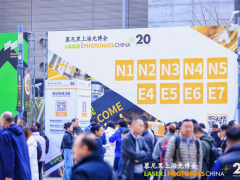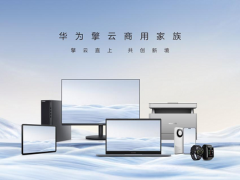???? 據今日油價3月23日報道,殼牌在其《2021年液化天然氣展望》中表示,到2040年,全球液化天然氣的年需求將從去年的3.6億噸增至7億噸。其中75%的需求增長將來自一個市場——亞洲。
????多年來,亞洲經濟體一直是液化天然氣的主要市場。作為一種更清潔、成本更低的煤炭替代品,液化天然氣越來越受到重視。殼牌表示,只有在凈零承諾的情況下,這種突出地位才會繼續提高。這種增長可能會把亞洲變成一個液化天然氣買家的卡特爾組織。
????彭博社的Anna Shiryaevskaya最近在一篇關于液化天然氣的文章中寫道,亞洲對液化天然氣的需求正在顛覆這種商品的傳統定價模式。最新證據表明,基本面總是勝過一切,亞洲決定了今冬的液化天然氣價格,在最冷的季節將其推高至天價,然后在天氣開始變暖時將其推低至更正常的水平。盡管傳統的定價模式是以歐洲為中心的,基本上是將液化天然氣價格與原油基準價格掛鉤。
????歐洲仍是液化天然氣的消費大市場,在可預見的未來,歐洲國家仍將是液化天然氣的消費大國。但鑒于殼牌未來約75%的液化天然氣需求將來自亞洲的預期,在這個正在蓬勃發展的市場上,歐洲開始看起來像是一個小買家。
????瑞士貿易公司Axpo Solutions的一名分析師表示:“未來幾年,歐洲的天然氣價格將越來越不以歐洲為中心,而越來越受全球的影響力。”
????這種影響將主要來自亞洲,最近冬季價格的飆升就證明了這一點。而且很可能與長期供應合同一起出現,這將對液化天然氣的價格產生更長遠的影響。在今年年初價格飆升超過1000%之前,現貨市場一直是亞洲購買液化天然氣的首選市場。現在,在買家看來,長期供應合同更合理。
????賣家也有同感。上個月世界上最大的液化天然氣生產國和出口國,卡塔爾的能源部長建議大型交易選擇安全的長期合同,以避免再次出現1月份的價格飆升情況。他指出,如果現貨市場繼續主導液化天然氣貿易空間,價格飆升將是不可避免的,尤其是當前供應即將再次收緊。
????因此,一方面,需求在增長,而且大部分增長來自于一個地區,由三大消費國主導,分別是中國、印度和韓國。前兩個國家對液化天然氣行業來說尤其重要。殼牌數據顯示,2020年,中國和印度合計占全球液化天然氣進口增長的大部分,而亞洲的另外兩個液化天然氣進口大國——日本和韓國,則出現了下降。
????另一方面,長期供應合同比波動劇烈的現貨市場更具吸引力,因此大買家可以在價格持續較低時鎖定價格。這意味著,如果卡塔爾最高能源長官薩阿德?阿爾卡比(Saad al-Kaabi)的觀點是正確的,而且供應確實將吃緊,現貨市場可能會變得更加動蕩。這些趨勢描繪了一幅可以稱為“新興買家卡特爾”的畫面。
????這肯定是一個非自愿的卡特爾,至少目前看來是這樣的。但是即使是一個非自愿的卡特爾也會影響全球液化天然氣的流動和價格,減少對其他液化天然氣市場的供應并推高價格。
????如果中國的大型能源貿易商通過長期合同從卡塔爾、澳大利亞或美國獲得該國所需的大部分液化天然氣,那么留給中國以外的液化天然氣就會減少。這通常意味著在現貨市場和對后來者的長期供應合同市場上價格會更高。這就是亞洲在未來幾十年可能決定全球液化天然氣價格的原因。
????能源咨詢公司Cornwall Insight表示:“英國和歐洲天然氣市場對全球液化天然氣價格的敏感性可能會增加。由于沒有在英國新建長期儲存設施的具體計劃,加上英國大陸架開采量不斷下降,未來幾年該地區可能會加大對液化天然氣的依賴。”
????事實上,隨著歐洲不再是價格制定者,它將變得更加依賴液化天然氣進口,并更容易受到市場價格波動的影響。猜測亞洲強國能否將其在液化天然氣市場的主導地位作為一種武器,將是一件有趣的事情。它們當然能夠影響全球液化天然氣的流動,影響供應(如果不是全球需求的話),并因此影響價格。從印度最近的情況來看,由于對價格的擔憂,印度開始減少對中東石油的購買。因此,世界上最大的液化天然氣買家肯定會幫助或阻礙世界某個地區的供應增長,就像歐佩克對待石油一樣。
????王佳晶 摘譯自 今日油價
????原文如下:
????Asian LNG Buyers Could Form The World’s Next Energy Cartel
????Global demand for liquefied natural gas will grow to 700 million tons annually by 2040 from 360 million tons last year, Shell said in its LNG Outlook 2021. As much as 75 percent of this demand growth will come from one regional market: Asia.
????Asian economies have been a key market for liquefied natural gas for years now. The fuel has been gaining growing prominence as a cleaner and cost-effective alternative to coal. This prominence will only continue growing with net-zero commitments, Shell said. And this growth could turn Asia into an LNG buyers’ cartel.
????Bloomberg’s Anna Shiryaevskaya wrote in a recent article on LNG that Asian demand for LNG was upending traditional pricing models for the commodity. In the latest proof that fundamentals always beat everything else, Asia dictated LNG prices this winter, sending them sky-high during the coldest of the season and then pushing them back down to more normal levels once the weather started warming—all this despite the traditional price-setting model that is Europe-centric and that basically consists in tying LNG prices to the benchmark price of crude oil.
????Europe is still a big consumer of liquefied natural gas, and it will continue to be a big consumer in the observable future. But in light of Shell’s forecast about 75 percent of future LNG demand coming from Asia, Europe starts to look like a minor buyer on what is certainly a booming market.
????“Over the next couple of years European gas prices will become less and less Europe-centric, and more and more globally influenced,” an analyst with Swiss trading firm Axpo Solutions told Bloomberg’s Shiryaevskaya.
????Most of this influence will come from Asia, as evidenced recently during the winter price spike. And it may well come with long-term supply contracts, which will have their own—longer—influence over LNG prices. The spot market was the go-to place to buy LNG in Asia until prices soared by more than 1,000 percent earlier this year. Now, long-term supply contracts look more reasonable to buyers.
????Sellers share the sentiment. Last month, the energy minister of Qatar, the world’s top LNG producer and exporter, advised big sellers to secure long-term contracts to avoid a repeat of the January price spike, which, he said, would be inevitable if the spot market continued to dominate the LNG trade space, not least because supply was about to tighten once again.
????So, on the one hand, demand is growing, and most of this growth is coming from one single region, dominated by three big consumers: China, India, and South Korea. The first two are particularly important: last year, China and India together accounted for the bulk of global growth in LNG imports, according to Shell, while the other two big LNG importers in Asia—Japan and South Korea—saw declines.
????On the other hand, long-term supply contracts are starting to look more attractive than the volatile spot market once again, so big buyers could lock low prices while they last. This means that the spot market could become even more volatile if Qatar’s top energy man, Saad al-Kaabi is right and supply is indeed set to tighten. These trends are painting a picture of what could be called an emerging buyers’ cartel.
????It is an involuntary cartel, for sure, at least for the time being. In LNG, Asian states are looking out for themselves, not for their neighbor, not least because of neighborly tensions such as the ones between China and India. But even an involuntary cartel could—and would—affect global LNG flows and prices, reducing supply to other LNG markets and pushing prices higher.
????If big energy traders in China secure most of the LNG the country needs from Qatar, Australia, or the United States under long-term contracts, this will leave less LNG to go around outside China. This usually means higher prices, both on the spot market and the long-term supply contract market for latecomers. This is how Asia, although politically divided, could dictate global LNG prices in the coming decades.
????“The susceptibility of UK and European gas markets to global LNG prices may be set to increase,” Cornwall Insight, an energy consultancy, told Bloomberg’s Shiryaevskaya. “With no concrete plans for new long-term storage facilities in the UK and declining UK Continental Shelf, it could point to a greater LNG dependency in the coming years.”
????Indeed, Europe is set to become more dependent on LNG imports and more vulnerable to price movements on this market as it stops being the price-setter. It would be interesting to speculate whether the Asian powerhouses would be able to wield their dominance on the LNG market as a weapon. They are certainly in a position to influence global LNG flows, affecting supply, if not global demand, and, as a consequence, prices. And from what we recently saw in India, which started reducing its purchases of Middle Eastern oil because of price concerns, the world’s biggest buyers of LNG could certainly help or hinder supply growth in one or another part of the world, just like OPEC does with oil.
免責聲明:本網轉載自其它媒體的文章,目的在于弘揚石化精神,傳遞更多石化信息,并不代表本網贊同其觀點和對其真實性負責,在此我們謹向原作者和原媒體致以敬意。如果您認為本站文章侵犯了您的版權,請與我們聯系,我們將第一時間刪除。







